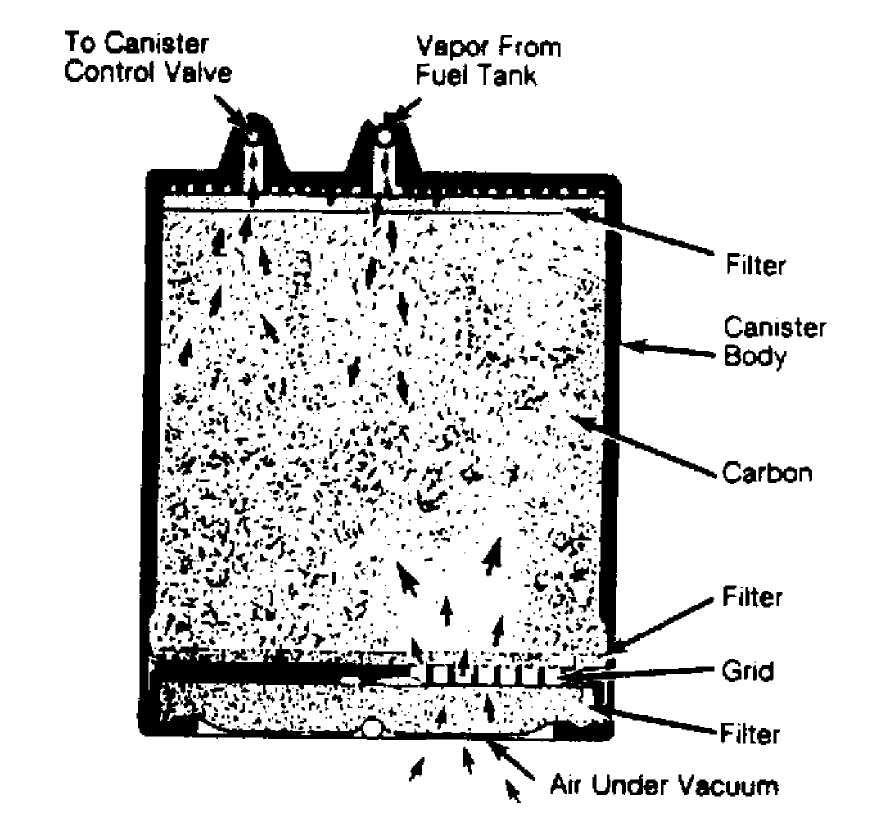1988 Jeep Cherokee
1988 Exhaust Emission Systems FUEL EVAPORATION SYSTEMS
JEEP
DESCRIPTION
The Evaporative Emission Control System (EECS), prevents raw fuel vapors from entering the atmosphere. It consists of a venting system which allows only vaporous fuel to be drawn into the system.
During engine operation, vapors are drawn through system vent lines and into intake manifold. When engine is off, fuel vapors are stored in vapor storage canister charcoal. Vapors are drawn into intake manifold when engine is running again. See Fig. 1.

Fig. 1: Open-Bottom Canister (2-Tube Type) Courtesy of General Motors Corp.
OPERATION
Roll-Over Check Valve
When valve is inverted, a stainless steel ball pushes a
plunger against its seat, blocking fuel flow through valve.
Charcoal Canister
All models are equipped with a dual-purge type canister. An inlet is provided for carburetor fuel bowl vapors and another one for fuel tank vapors. The outlet is connected to intake manifold vacuum. A secondary purge fourth nipple connects to carburetor ported vacuum.
During engine operation, manifold vacuum draws fresh air through inlet filter in bottom of canister and purges stored vapors. When ported vacuum reaches 12 in. Hg, secondary purge circuit is opened and canister purges at a much higher rate.
Carburetor Bowl Vent
The carburetor bowl vent provides an outlet for fuel vapors when engine is not operating. During engine operation, fuel bowl is vented to inside of air cleaner. The bowl is automatically closed by mechanical link to throttle when engine is started.
MAINTENANCE
No adjustments are required with this system. Replace air inlet filter (if equipped) in bottom of charcoal canister every 30,000 miles. Regular inspection should be made and defective components replaced as necessary.